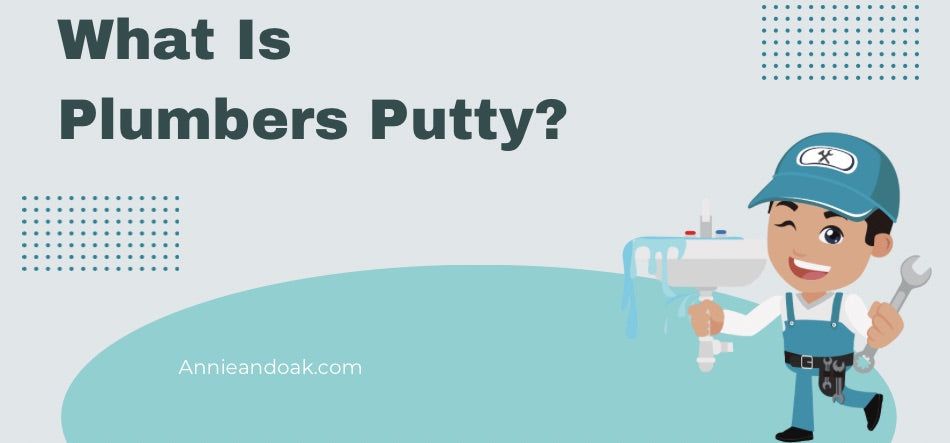
Can I Use Silicone Instead Of Plumbers Putty?

When it comes to home renovations and repairs, it's worth keeping a tub of plumber's putty in your toolbox to fix plumbing issues like leaks in your toilet, sink, shower, and other sources of drainage.
However, if you're looking for something more permanent to fill the hole left behind by that pesky leaky pipe, silicone is an excellent choice.
It can be used as a caulking material around pipes, sinks, showers, toilets, etc., and is also available in different colors. Plus, it won't crack or peel away from surfaces like traditional plumber's putty will over time.
Whether you can use silicone instead of plumbers' putty is dependent on a few factors, the main one being how permanent do you need the fix to be.
For example, if you've repaired a leaky toilet numerous times with plumbers putty, and it still leaks after a time, it might be worth using some silicone caulk.
In this article, we'll be looking at both plumbers putty and silicone caulk in greater detail, so you can decide which option best fits your needs.
We'll start off by discussing what each product does, then move onto their uses and pros/cons before finishing up with our recommendation.
What Is Plumbers Putty?

Plumbers putty is a type of repair compound that comes in various forms and can be applied to just about any surface. The most common form of the stuff is a white goo that has a consistency similar to toothpaste.
This kind of putty is usually made out of a mixture of polyvinyl acetate (PVA) resin and water. PVA is a plastic-like substance that hardens when exposed to air.
It can be used to patch holes in walls, floors, ceilings, and even roofs. It can also be used to fill cracks in concrete, tile, wood, plaster, brick, stucco, drywall, and many other materials.
Furthermore, it's often recommended to use plumbers putty to fill small gaps between tiles or stones. However, it should not be used to fill larger gaps because its adhesive properties are limited.
How Does Plumbers Putty Work?
When you apply plumbers putty to a surface, it dries almost instantly. Once it's hardened, it becomes incredibly strong, making it perfect for filling small spaces where you don't want anything else to stick.
The only downside to this particular type of putty is that it doesn't adhere well to certain types of surfaces, such as metal, glass, porcelain, ceramic, and marble.
So if you have these kinds of materials in your house, you may need to use another type of filler instead.
The good news is that there are plenty of options available to you. In fact, silicone is probably the most popular alternative to plumbers putty. But first, let's look at what silicone actually is.
What Is Silicone Caulk?
Silicone caulk is basically the same thing as plumbers putty, but it's designed to be used in a much wider variety of applications.
This type of caulking is typically clear and flexible, meaning that you can easily see through it to check whether it's properly sealed. It's also very durable, lasting for years without cracking or peeling away from surfaces.
This means that you can use it to seal up tiny cracks and crevices all over your home. You can use it to fill up gaps around windows, doors, sinks, toilets, tubs, showers, pipes, drains, and more.
And unlike plumbers putty, silicone caulk will work on virtually any material. That includes metals, ceramics, glass, stone, and even plastics.
So if you're looking for an easy way to seal up those little nooks and crannies in your home, silicone caulk is definitely the right choice.
How Does Silicone Caulk Work?
If you've ever tried to pry open a tube of silicone caulk, you know how tough it is. When you squeeze the tube, the stuff inside expands and contracts, causing it to become extremely firm.
Once it's been squeezed into place, however, it'll stay that way until you remove the pressure. And once it's set, it won't come undone unless you really try to do so.
Pros/Cons Of Plumbers Putty
Plumbers putty is one of the best ways to fix minor leaks and cracks in your home. For example, if you notice that some of your shower walls are leaking, you can simply apply a thin layer of this stuff to the affected area.
Then, when it hardens, it'll create a waterproof barrier that prevents water from seeping through.
However, this type of putty has several drawbacks. First, it's expensive. Second, it's messy. Third, it takes time to dry. And fourth, it doesn't last forever.
As mentioned earlier, this type of putter isn't suitable for sealing large holes or cracks. If you have something like that, you might want to consider using silicone caulk instead.
Pros/Cons Of Silicone Caulk
As we just saw, silicone caulk is pretty versatile. This means that it can be used to repair cracks and holes of all sizes.
It's also inexpensive, which makes it great for smaller projects. Plus, it's super easy to use.
The only downside is that you'll need to consider how permanent you need the fix to be. Silicone caulk is extremely difficult to remove once it's been applied, so any mistakes could take time to undo.
Final Thoughts
In short, both types of caulking are useful tools. However, they each have their own advantages and disadvantages.
In the end, though, the decision is entirely up to you. Both types of caulking are great options, so there's no reason not to choose either one.
But if you're looking for something that's easier to use than plumbers putty, then silicone caulk may be the better option.
Either way, remember that caulking is only as good as its application. So make sure you get the job done correctly the first time.
Now that you know everything you need to know about caulking, what are you waiting for? Go ahead and give it a shot!






